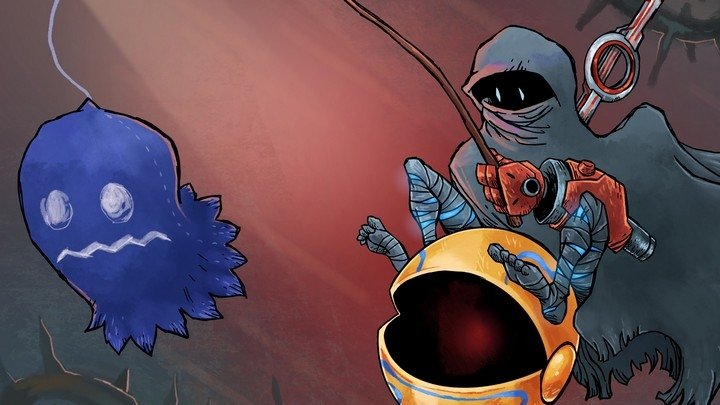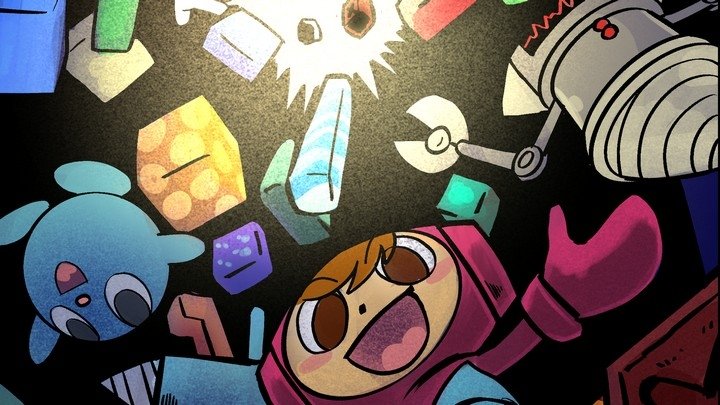Ever Green: 30 years of Game Boy classics
Six of the best from Retronauts contributors
Not sure if anyone noticed, but the Game Boy turned 30 years old today.
Yes, Nintendo's beautifully designed wodge of on-the-go gaming goodness first hit store shelves in Japan on this very day not two, not four, but three decades whence. Thusly, to round off a fine clutch of anniversary celebrations, some of your favourite Retronauts contributors (and me, Stuart Gipp) picked out a couple of games each that define the Game Boy experience for them. Sound off in the comments below and let us know your favourite Game Boy titles, whether they be avowed classics or obscure gems.

The Legend of Zelda: Link's Awakening
There's an old comic which sums up our collective arguments surrounding The Legend of Zelda series where everyone agrees that the best game is "the Zelda game that came out when I was 12." I'm here to say that's ridiculous; the best Zelda game came out when I was 16 and it was the Game Boy of all platforms. There's a reason Nintendo is giving this game an HD facelift in 2019: it's overdue for its canonization.
The Legend of Zelda: Link's Awakening was only the fourth game in the series yet it tossed most of the already well-established elements (no Hyrule, no Ganon, no Zelda!) in favor of an adventure on a tiny island. Sure, there are 8 dungeons and a few familiar foes, but there are also flying chickens, singing fish, and embarrassed mermaids. With its cast of offbeat NPCs and cameos from other Nintendo characters (including Wart from Super Mario 2), director Takashi Tezuka said "it was like we were making a parody." Link's Awakening has moments of real humor yet I can't listen to the Ballad of the Wind Fish without feeling a genuine sense of melancholy. Koholint Island may not be real, but my memories of it are. - Feit

The Final Fantasy Legend
The Game Boy promised full Nintendo experiences in a small, portable package. On the surface, at least, Final Fantasy Legends delivers on that promise--a long role-playing game with customizable characters, a complicated story, and a lot of systems to get lost in. But while FFL shares part of its name with the NES Final Fantasy, the real genius of it is just how weird it gets. Everything including weapons has a limited number of uses; you can eat monster meat to change player-controlled beasts into other, hopefully more powerful creatures; and oh yeah, the whole thing is about you climbing a tower to murder God. Much of this is confusing and unnecessarily harsh, but as a kid, I spent hours fascinated by the game's eerie, ambiguous storytelling and bizarre mechanics. It lacks many of the quality of life adjustments people have come to expect from RPGs (and hell, games in general), but if you enjoy unusual, ambitious, and occasionally maddening experiences, this one's for you. - Zack Handlen

Bill & Ted's Excelllent Game Boy Adventure
Time travelling both literally and figuratively, Bill & Ted is a rollicking handheld throwback to the good old days of microcomputers. Coming from the patron saints of disappointing movie tie-ins - LJN - this is a shockingly good, brilliantly concise little single-screen platformer. Indeed, that unmistakeable ZX Spectrum blood flows through it from beginning to end, with Bug-Byte's masterpiece Manic Miner seemingly its primary inspiration. As in Matthew Smith's rubber keyboard classic, you'll find yourself leaping enemies and hazards and gathering all the on-screen items before the exit - a telephone booth straight out of the movie - deigns to appear. Repeat for 49 further levels. It may sound tedious, but the exceptionally smooth control is a huge step up from its 48k ancestors and the level design is consistently good. It's challenging without being ridiculous and doesn't outstay its welcome. The graphics are extremely basic, calling to mind the manner of far earlier Game Boy title than Bill & Ted's late 1991 bow would suggest, but personally I've always favoured the smaller, simpler aesthetic tends to sing on Nintendo's seminal handheld. Titles like this and Sunsoft's Batman, while not conventionally "good looking" tend to avoid the blur and contrast issues that more ambitious and larger sprites tend to fall foul of.
Overall, it's one to keep returning to. I would even go so far as to describe it as "totally bodacious". Is that what they say in the movie? I haven't seen it. - Stuart Gipp

Donkey Kong
There's no more succinct summary of how the world felt about Donkey Kong in 1994 than the opening animation of Donkey Kong Country: an elderly ape plays the original 1981 arcade title screen music on a vintage phonograph until a younger, hipper ape appears with a boombox to knock the old codger off his rocker. Donkey Kong was old news; an important game in the medium's history but not one anyone wanted to continue celebrating. And yet just months earlier that same year Nintendo brought Donkey Kong to the Game Boy and secretly turned it into an exceptionally deep puzzle platformer.
The first four levels of DK '94 are nearly identical to DK '81, but after that Mario chases him across nearly 100 new stages with an increasing array of foes and gimmicks. Mario's learned more tricks of his own though in the form of new jumping mechanics that make the game a thrill to play as it's possible bound through certain levels in seconds. Alternately, players can comb through every level to recover Pauline's parasol, hat, and bag for more points and extra lives. I wish this version of Donkey Kong and not Rare's too-cool version became the template for future Kong games, but that's not the timeline we live in. - Feit

Gargoyle's Quest
Gargoyle's Quest is difficult. Considering it's a spin-off from the notoriously cruel Ghosts'n'Goblins, that's not exactly surprising, but while its predecessor is infamous for its brutal design, Quest is by and large surprisingly fair. The main character's ability to hover and cling to walls helps to smooth out the platforming challenges, and the simple but meaningful progression of abilities allows for a sense of mastery over the environment that poor Arthur and his one-shot armor never achieved. Quest allows players to save their progress as well, and while the levels growing increasingly daunting, they rarely cross the line into outright punishment. At least, that's how I remember it--with the caveat that I played (and finished) this game when I was younger and had a lot more time and patience for mastering tricky jumps and tough bosses. I can confirm that the game still looks and sounds great, and that its nominal attempts at role-playing remain charming. Also, the last boss is a rough one, so good luck. - Zack Handlen

Monster Max
Another classic in that stalwart British approach to game design, Jon Ritman and Bernie Drummond's magnum opus Monster Max was the apotheosis of the genre they codified on the ZX Spectrum (there it is again!) with the classic Batman and the truly immortal masterpiece Head Over Heels. The best elements of those beloved titles were fed into Monster Max, with any and all microcomputer-based chaff extracted, the fiddly keyboard/Kempston inputs excised in favour of smooth D-pad controls.
Effectively, Monster Max is an everything-and-the-kitchen-sink approach to the isometric adventure genre, but with plentiful concessions to the portable and bite-size nature of the Game Boy system. It's the biggest game that Ritman and Drummond ever made - twice the size of the enormous Head Over Heels - but tather than one huge world to get lost in, it's been divided into 29 discrete stages. They're large enough to chart and explore, but not overwhelming or samey. They're tricky to figure out, but not confusing or annoying. It's a lucid, thoughtful game that requires patience and experimentation from the player in a way that a lot of titles really don't. The graphics are sharp and clear, the controls responsive. It's the combined knowledge of two gaming artisans pushed to its very apex. Monster Max may not be for everyone, but it would be borderline impossible for it to be a better game. - Stuart Gipp




